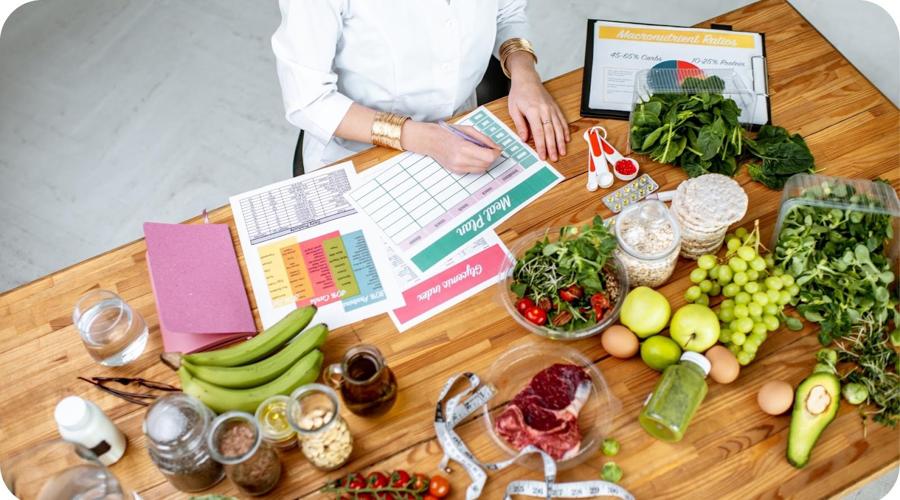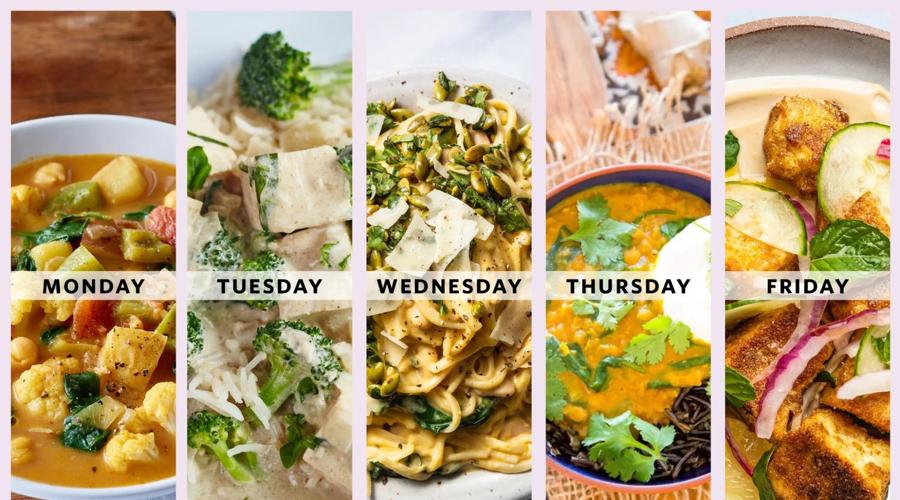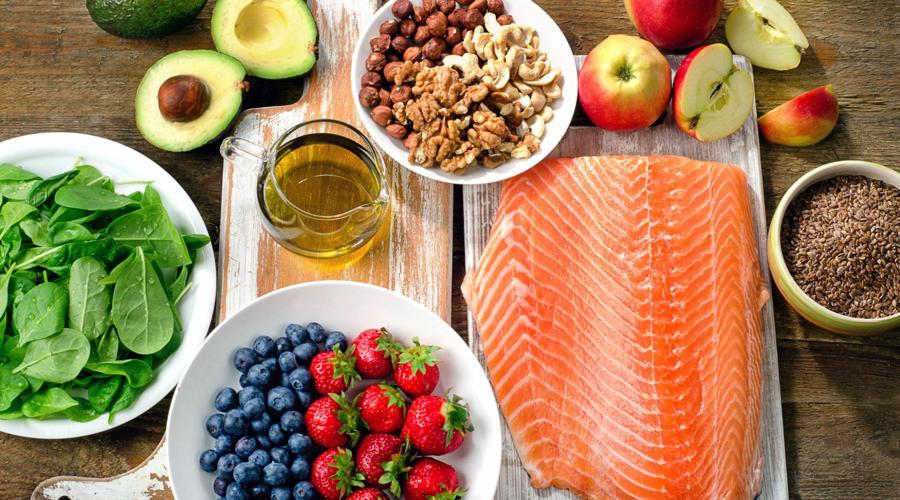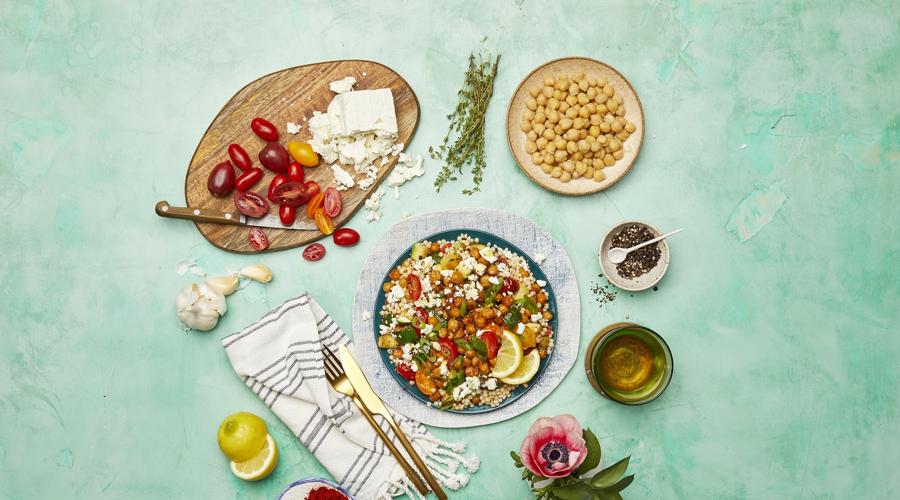Meal planning is an essential aspect of maintaining a healthy lifestyle. There are several types of meal planning, and the most important ones include:
Balanced meal planning: This involves creating meals that are well-balanced in terms of macronutrients, including carbohydrates, proteins, and fats. The goal is to ensure that you are getting all the nutrients you need in the right amounts.
Budget meal planning: This involves planning meals that are cost-effective and budget-friendly. The goal is to create healthy meals while staying within your budget.
Meal planning for weight loss: This involves creating a calorie deficit by planning meals that are lower in calories but still provide enough nutrients to keep you feeling full and satisfied.
Meal planning for specific dietary needs: This involves creating meals that cater to specific dietary needs, such as gluten-free, vegan, or vegetarian. The goal is to ensure that you are getting all the nutrients you need while adhering to your dietary restrictions.
Batch meal planning: This involves preparing meals in advance in large quantities and then storing them for later use. The goal is to save time and make it easier to stick to a healthy eating plan.
Overall, the most important type of meal planning depends on your individual goals and needs. It’s essential to create a meal plan that works for you and your lifestyle, and that helps you achieve your desired outcomes.
What Is Meal Planning
Meal planning is the process of intentionally and thoughtfully preparing meals in advance. It involves deciding what to eat, when to eat it, and how much to eat. The goal of meal planning is to make healthy and nutritious meals that fit your lifestyle, dietary preferences, and nutritional needs.
Meal planning can be as simple or as complex as you want it to be. It can range from planning out a few meals for the week to creating detailed menus for each day of the week. The key is to find a meal planning system that works for you and helps you achieve your goals.
Overall, meal planning is a useful tool for maintaining a healthy lifestyle and achieving your dietary goals.
What Are The Benefits Of Meal Planning
Meal planning has numerous benefits, including:
- Time-saving: Meal planning can save you time in the long run by reducing the time spent on deciding what to eat, grocery shopping, and food preparation during the week.
- Cost-effective: Meal planning can also help you save money by allowing you to buy food in bulk, avoid impulse purchases, and reduce food waste.
- Promotes a healthy diet: Meal planning helps you make healthier food choices by ensuring that you have balanced meals with enough nutrients, vitamins, and minerals. It also helps you avoid unhealthy processed foods, fast foods, and snacks.
- Weight management: Meal planning can help with weight management by controlling portion sizes, ensuring balanced macronutrients, and reducing the likelihood of overeating.
- Reduces stress: Knowing what you will eat and when can reduce decision fatigue and stress related to food choices.
- Customization: Meal planning can be customized to your dietary needs, preferences, and lifestyle.
Overall, meal planning is an effective way to improve your eating habits, save time and money, and reduce stress related to food choices.

What Are The Different Types Of Meal Planning
There are several types of meal planning that you can use depending on your goals, lifestyle, and dietary needs. Some of the most common types of meal planning include:
Weekly meal planning: This involves planning out your meals for the entire week, including breakfast, lunch, and dinner. You can create a shopping list for the ingredients you need and prepare meals in advance if necessary.
Batch cooking: Batch cooking involves preparing meals in large quantities and storing them in the fridge or freezer for future consumption. This method saves time and money by reducing food waste and avoiding the need to cook every day.
Menu planning: Menu planning involves creating a menu of meals for the week or month. You can use this method to plan meals for special occasions or events, such as holidays or dinner parties.
Macro counting: This method involves calculating the macronutrient ratios (carbohydrates, protein, and fat) in each meal to ensure a balanced and healthy diet. You can use an app or website to track your macronutrients and plan your meals accordingly.
Diet-specific meal planning: This involves planning meals that adhere to specific diets, such as vegan, gluten-free, paleo, or keto.
Overall, the type of meal planning you choose depends on your goals, lifestyle, and dietary needs. You can experiment with different methods to find what works best for you.
What Is Batch Cooking Of Meal Planning
Batch cooking is a meal planning strategy that involves preparing larger quantities of food at one time, typically over the weekend or a designated day of the week, and then portioning the food into individual servings to eat throughout the week. The idea is to cook once and eat multiple times, saving time and effort during busy weekdays.
Batch cooking can involve preparing large batches of one-pot meals, like soups, stews, and casseroles, or preparing individual components of meals, like roasted vegetables, grains, and proteins, that can be combined to make different meals throughout the week.
Batch cooking can help you save time and money, reduce food waste, and make it easier to eat healthy meals consistently. It also allows you to have nutritious and tasty meals ready to go when you need them, making it easier to stick to your dietary goals.
When batch cooking, it is important to plan your meals ahead of time and use appropriate storage containers to keep the food fresh. You can also experiment with different recipes and cooking techniques to add variety to your meals throughout the week.
What Is Meal Prepping
Meal prepping is the process of preparing meals or meal components in advance, typically for a few days to a week, to make it easier to eat healthy and nutritious meals consistently. Meal prepping typically involves cooking or preparing several meals at once and then portioning them out into individual servings to be consumed throughout the week.
Meal prepping can involve cooking whole meals or preparing individual meal components, such as roasted vegetables, grilled chicken, or quinoa, which can be combined to create different meals throughout the week.
The idea is to make it easier to eat healthy and nutritious meals by having meals or meal components pre-prepared and ready to go when you need them.
Benefits of meal prepping include saving time and money, reducing food waste, and making it easier to stick to your dietary goals. By having meals or meal components pre-prepared, you can avoid making impulsive food choices and ensure that you are consuming balanced meals with the right nutrients.
To meal prep effectively, it is important to plan your meals ahead of time, use appropriate storage containers to keep the food fresh, and experiment with different recipes and cooking techniques to add variety to your meals throughout the week.

What Is Menu Meal Planning
Menu meal planning involves creating a menu of meals for a specific period, usually a week or a month, and then preparing the meals according to the menu. The goal of menu meal planning is to make it easier to eat healthy and nutritious meals consistently by having a plan in place for what to eat and when to eat it.
Menu meal planning typically involves deciding on the meals you want to prepare for the week or month, creating a shopping list of ingredients you need, and then preparing the meals according to the menu.
This method allows you to save time and money by reducing food waste, and you can also experiment with different recipes and cooking techniques to add variety to your meals throughout the week.
Menu meal planning can be especially helpful for busy individuals or families who may not have a lot of time to cook or plan meals during the week. By having a menu in place, you can streamline your grocery shopping and meal preparation, and avoid making impulsive food choices that may not align with your dietary goals.
When creating a menu for meal planning, it’s important to consider your dietary preferences, nutritional needs, and schedule. You can also factor in any special occasions or events that may require special meals or recipes.
With proper planning and preparation, menu meal planning can be an effective way to eat healthy and nutritious meals consistently.
What Is Flexible Meal Planning
Flexible meal planning is a more relaxed approach to meal planning that allows for more spontaneity and freedom in food choices. With flexible meal planning, you still plan your meals ahead of time, but you leave room for flexibility and adjust your meals based on your daily schedule, mood, or cravings.
Flexible meal planning allows you to have a basic plan in place, but also allows for some changes or substitutions as needed. For example, if you planned to have grilled chicken and vegetables for dinner but feel like having a pasta dish instead, you can make the switch without feeling guilty or throwing off your entire meal plan.
Flexible meal planning can be helpful for individuals who may have a busy or unpredictable schedule, or those who prefer more variety in their meals. It can also help to reduce the stress and pressure of sticking to a strict meal plan, which can be difficult to maintain over time.
To use flexible meal planning effectively, it’s important to have some basic meal ideas and ingredients on hand, and to be open to making substitutions or changes as needed. You can still focus on making healthy and nutritious meals, but allow for some flexibility and variation in your food choices.
What Are Some Tips For Successful Meal Planning
Here are some tips for successful meal planning:
- Start with a plan: Begin by setting a goal for your meal planning, whether it’s to save time, eat healthier, or reduce food waste. Create a meal plan based on your goal, and be sure to include a variety of healthy and nutritious foods.
- Keep it simple: Don’t make meal planning too complicated or overwhelming. Start with a basic plan for a few meals each week, and gradually increase as you become more comfortable with the process.
- Use a calendar or planner: Use a calendar or planner to keep track of your meal plan, grocery list, and food prep tasks. This can help you stay organized and ensure that you have all the ingredients you need for your meals.
- Shop for groceries once a week: Make a weekly trip to the grocery store or farmer’s market to stock up on ingredients for your meals. This can help you save time and money, and reduce food waste.
- Batch cook: Consider batch cooking meals or meal components in advance to save time during the week. You can prepare large batches of soup, chili, or roasted vegetables, and store them in the fridge or freezer for later use.
- Use leftovers: Make use of leftovers from previous meals by incorporating them into new meals or repurposing them as snacks or lunch items.
- Be flexible: Allow for some flexibility and variation in your meal plan. It’s okay to make changes or substitutions as needed, based on your schedule or preferences.
By following these tips, you can create a successful meal planning routine that helps you eat healthier, save time, and reduce stress related to food choices.

How Can Save Money With Types Of Meal Planning
Meal planning can be a great way to save money on food expenses. Here are some ways to save money with different types of meal planning:
Budget meal planning:
Plan your meals based on your budget and stick to it. Choose less expensive ingredients and plan your meals around items that are on sale or in season. You can also buy items in bulk to save money.
Batch cooking:
Batch cooking is a great way to save money on food expenses by cooking in bulk and storing meals for later use. This can reduce the need for takeout or fast food, which can be more expensive.
Weekly meal planning:
By planning out your meals for the week, you can create a shopping list based on the ingredients you need, which can help you avoid buying unnecessary items and reduce food waste. This can help you save money on groceries.
Diet-specific meal planning:
By choosing a specific dietary plan, such as a vegetarian or vegan diet, you can reduce your food expenses by avoiding expensive meats and focusing on less expensive plant-based proteins, such as beans and lentils.
Menu meal planning:
Creating a menu of meals for a specific period, such as a week or month, can help you plan your meals around less expensive ingredients and save money on groceries.
Overall, meal planning can help you save money on food expenses by reducing food waste, avoiding impulse purchases, and allowing you to plan your meals around less expensive ingredients. By following a few simple tips, you can create a meal planning routine that works for you and helps you save money on food expenses.
How Can Meal Planning Help With Weight Loss
Meal planning can be a useful tool for weight loss by helping to control portion sizes, ensure balanced macronutrients, and reduce the likelihood of overeating or making unhealthy food choices. Here are some ways that meal planning can help with weight loss:
Portion control:
By planning out your meals ahead of time, you can control portion sizes and ensure that you are consuming the right amount of calories for your weight loss goals.
Balanced macronutrients:
Meal planning can help you ensure that your meals contain the right balance of carbohydrates, proteins, and fats, which can help you feel full and satisfied for longer periods.
Healthy food choices:
By planning your meals ahead of time, you can avoid making impulsive food choices and stick to healthy foods that support your weight loss goals.
Reduced snacking:
Meal planning can help reduce the likelihood of snacking on unhealthy foods throughout the day by ensuring that you have healthy and nutritious meals and snacks on hand.
Reduced food waste:
By planning your meals and shopping for specific ingredients, you can reduce food waste and save money on groceries, which can support your weight loss goals.
Overall, meal planning can be an effective tool for weight loss by promoting healthy food choices, portion control, and balanced macronutrients. By creating a meal plan that works for you and your lifestyle, you can set yourself up for success and achieve your weight loss goals.
How Can Involve Family In Types Of Meal Planning
Involving your family in meal planning can be a great way to promote healthy eating habits, build stronger relationships, and create a sense of unity around mealtime. Here are some ways to involve your family in meal planning:
Ask for input: Ask your family members for their input on meal ideas and involve them in the planning process. This can help to build excitement around mealtime and give everyone a sense of ownership over what they’re eating.
Shop and cook together: Involve your family members in grocery shopping and meal preparation. This can be a fun way to spend time together and teach important life skills.
Create a meal planning chart: Create a meal planning chart or board that displays the week’s meals and allows family members to see what’s coming up. This can help to build anticipation and make mealtime more enjoyable.
Try new recipes together: Encourage your family members to try new recipes and cuisines together. This can help to expand their palates and create a sense of adventure around mealtime.
Make mealtime a priority: Prioritize mealtime as a family by setting aside specific times each week for family meals. This can help to create a sense of routine and stability around mealtime.
By involving your family in meal planning, you can create a more positive and enjoyable mealtime experience while promoting healthy eating habits and stronger relationships.

Conclusion
In conclusion, meal planning is a great tool for achieving a healthy lifestyle, saving time and money, reducing food waste, and reducing stress related to food choices. There are different types of meal planning that you can use based on your goals, lifestyle, and dietary needs, including weekly meal planning, batch cooking, menu planning, macro counting, and diet-specific meal planning.
Each type of meal planning has its own benefits, and you can experiment with different methods to find what works best for you. By following some simple tips, you can create a meal planning routine that helps you achieve your goals and improve your overall well-being. Meal planning can also be a great way to involve your family in healthy eating habits and build stronger relationships.
How often should I meal plan?
The frequency of meal planning depends on personal preference and schedule. Some people prefer to plan meals weekly, while others plan for two weeks at a time.
How can I make meal planning more efficient?
You can make meal planning more efficient by using meal planning apps, creating a template for planning meals, and prepping ingredients ahead of time.
Can meal planning be adapted for special diets?
Yes, meal planning can be adapted for special diets such as vegetarian, vegan, gluten-free, and paleo. There are many resources available online for meal planning for specific dietary needs.
What are some common meal planning mistakes?
Some common meal planning mistakes include not planning for snacks, not considering leftovers as a meal option, and not using ingredients that are already on hand.
Can I still eat out if I am meal planning?
Yes, you can still eat out while meal planning. It is important to consider restaurant meals when planning your meals for the week and to choose healthier options when eating out.




